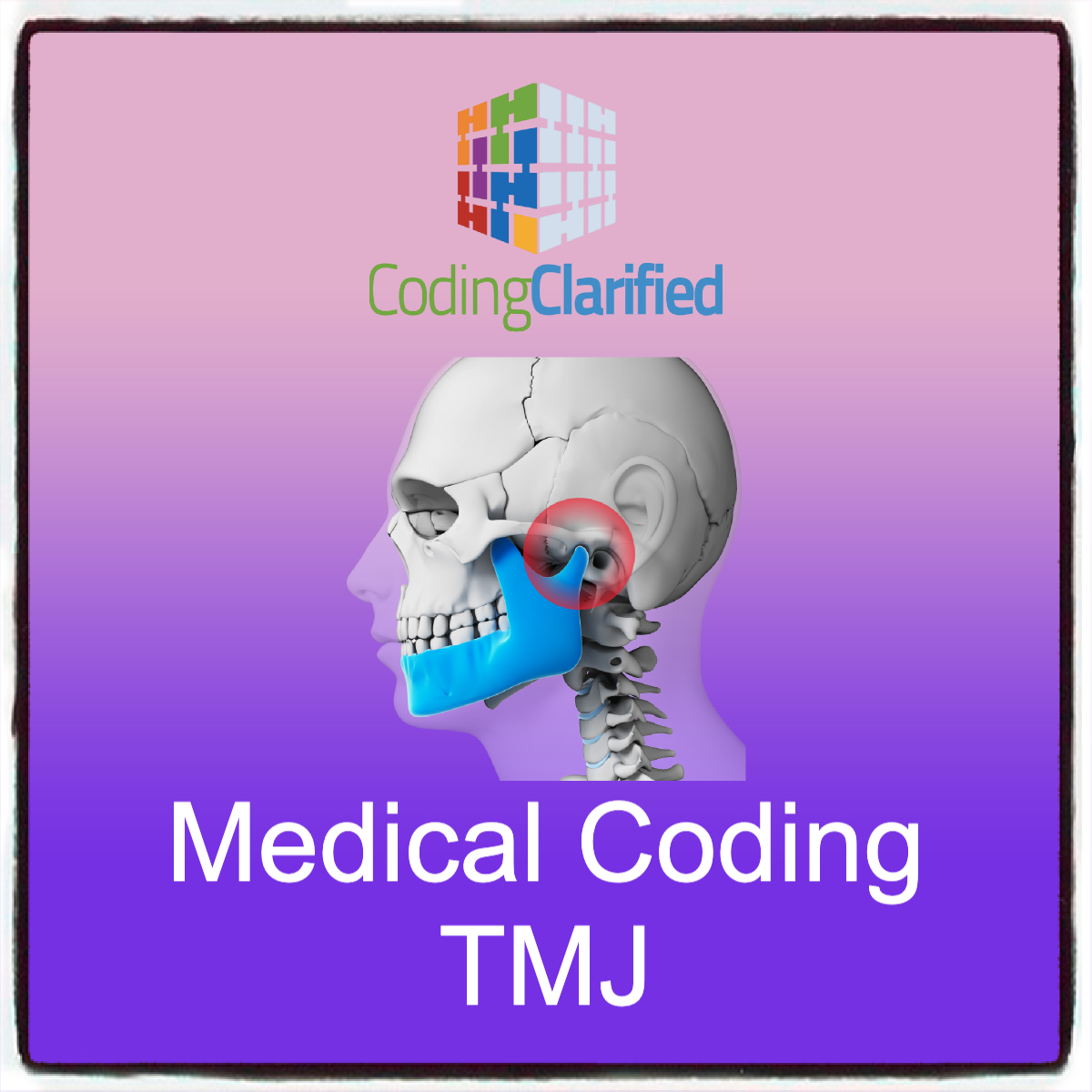Medical Coding for TMJ (Temporomandibular Joint) Guidelines
Temporomandibular joint (TMJ) disorders are a group of conditions that affect the joint connecting the jaw to the skull, which can lead to pain, dysfunction, and limited movement of the jaw. Correct coding and billing for TMJ disorders are crucial for healthcare providers to ensure accurate reimbursement and compliance with payer policies. This blog provides an overview of medical coding for TMJ guidelines, including key considerations, commonly used ICD-10 codes, and CPT codes, as well as tips to avoid common coding errors.
Understanding Temporomandibular Joint Disorders
TMJ disorders can result from various causes such as trauma, jaw misalignment, bruxism (teeth grinding), arthritis, or muscle tension. Symptoms often include:
- Jaw pain or tenderness
- Clicking or popping sounds
- Difficulty chewing or opening the mouth
- Swelling around the joint
- Headaches
Given the multifactorial nature of these conditions, accurate diagnosis and documentation are essential for proper coding and billing.
Common ICD-10 Medical Coding for TMJ Disorders
ICD-10 (International Classification of Diseases, 10th edition) is used for the diagnosis coding of TMJ disorders. The most common codes include:
- M26.60 – Temporomandibular joint disorder, unspecified
- This code is used when the specific nature of the TMJ disorder is unknown or not specified.
- M26.61 – Internal derangement of the temporomandibular joint
- This code applies when there is dysfunction in the TMJ joint, often related to disk displacement, arthritis, or other internal issues.
- M26.62 – Disc displacement without reduction, temporomandibular joint
- This code is used when the disk inside the joint becomes displaced, causing pain and discomfort.
- M26.63 – Disc displacement with reduction, temporomandibular joint
- This code applies when the disc in the TMJ is displaced but can return to its correct position (reduction).
- M26.64 – Myofascial pain syndrome, temporomandibular joint
- This code is used when the pain originates from the muscles surrounding the TMJ, often due to muscle spasms or overuse.
- M25.521 – Pain in temporomandibular joint
- This is a general code for pain in the TMJ without specifying the underlying cause.
- K08.89 – Other specified disorders of teeth and supporting structures
- This code may apply when TMJ issues are linked to or caused by dental problems.
When selecting an ICD-10 code for a TMJ disorder, it’s important to document the specific nature of the condition thoroughly, including the location, type, and any associated symptoms (e.g., pain, dysfunction, swelling).
ICD10Data https://www.icd10data.com/ICD10CM/Codes/M00-M99/M26-M27/M26-/M26.60
Common CPT Codes for TMJ Treatment
In addition to diagnosis coding, proper CPT (Current Procedural Terminology) codes are essential for billing the procedures related to the treatment of TMJ disorders. Below are some commonly used CPT codes for TMJ treatment:
- 20999 – Unlisted procedure, musculoskeletal system, head and neck
- This code is used for any surgical procedure not listed under a specific CPT code for TMJ surgery or related procedures.
- 41899 – Unlisted procedure, excision of soft tissue of mouth
- This can apply to TMJ surgeries where soft tissue excision is necessary for treatment.
- 97110 – Therapeutic exercises
- Used for physical therapy or exercises aimed at improving the range of motion and strength of the TMJ.
- 97035 – Ultrasound therapy
- This code may be used for ultrasound treatment for TMJ pain management.
- 92225 – Evaluation of the retina and other structures, TMJ imaging
- This code may apply to diagnostic imaging (such as MRI or CT scans) for diagnosing structural issues in the TMJ.
- 99213 – Office or outpatient visit, established patient, level 3
- This general code applies to visits where the provider evaluates and manages the patient’s symptoms and treatments for TMJ disorders.
- D7980 – TMJ arthroscopy
- If the provider performs an arthroscopy to evaluate or treat the joint, this code should be used.
Billing and Documentation Tips
- Ensure Clear and Accurate Documentation: The importance of thorough documentation cannot be overstated. Clear and specific documentation is necessary to avoid claim denials and to ensure the correct reimbursement. Providers should document:
- Detailed descriptions of symptoms (e.g., pain, clicking, difficulty chewing)
- Any tests performed (e.g., MRI, CT scans)
- Detailed treatment plans, including physical therapy, medications, and surgical interventions
- Whether the TMJ condition is acute or chronic
- Differentiate Between TMJ and Other Jaw Disorders: TMJ disorders should not be confused with other jaw conditions, such as dental issues or sinus problems. Clear differentiation in the medical record is essential for proper coding.
- Modifiers: Use appropriate modifiers when applicable to indicate specifics about the procedure performed or patient circumstances, such as:
- Modifier 25 for significant, separately identifiable evaluation and management (E/M) services performed on the same day as a procedure.
- Modifier 59 for distinct procedural services, used when separate procedures are performed on the same day.
- Authorization and Pre-certification: Depending on the payer, TMJ-related treatments, particularly surgical interventions, may require pre-certification. Be sure to check the payer’s guidelines and obtain any necessary authorizations to avoid claim denials.
- Avoid Upcoding or Downcoding: Avoid both upcoding (coding for more expensive procedures than what was actually performed) and downcoding (coding for less expensive procedures than what was performed). Accurate coding is crucial for compliance and to avoid audits or penalties.
CPT Modifiers https://codingclarified.com/cpt-medical-modifiers/
Proper coding and billing for TMJ disorders are essential to ensure that healthcare providers receive the appropriate reimbursement for the care they provide. By thoroughly documenting the patient’s condition and selecting the most specific ICD-10 and CPT codes, medical practices can minimize errors, reduce claim denials, and improve reimbursement rates. Understanding the nuances of TMJ disorders, as well as payer requirements, is key to navigating the complexities of coding and billing in this specialty.

